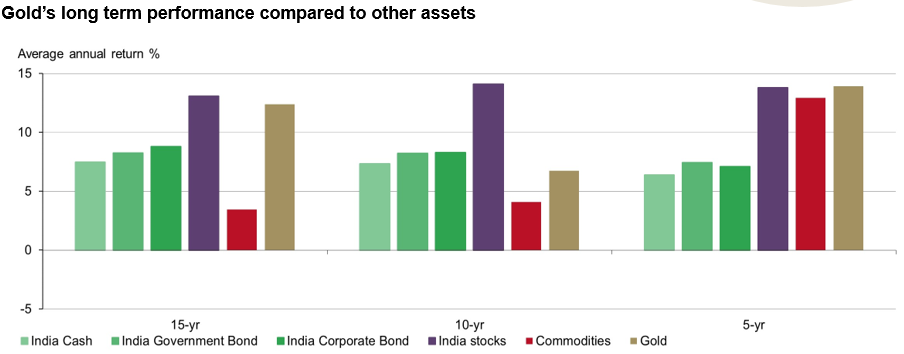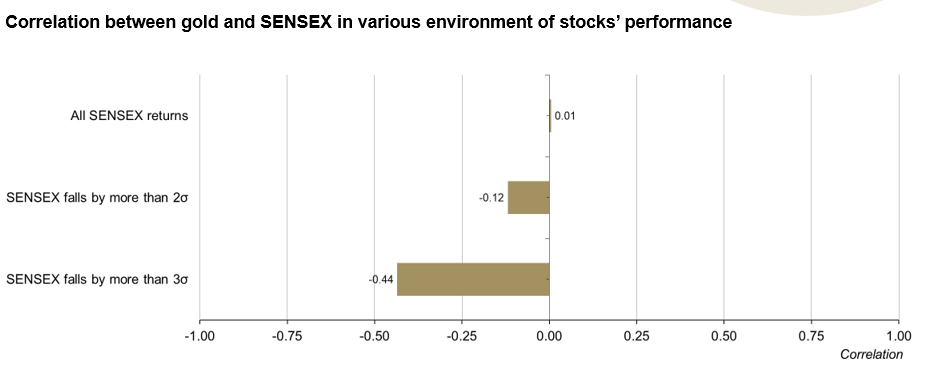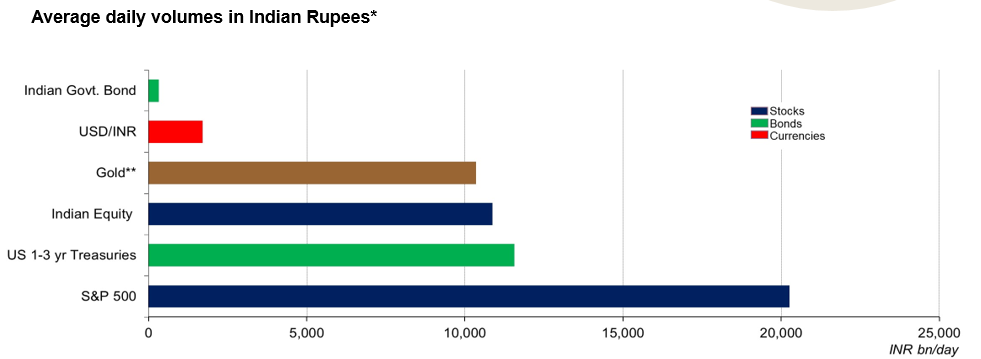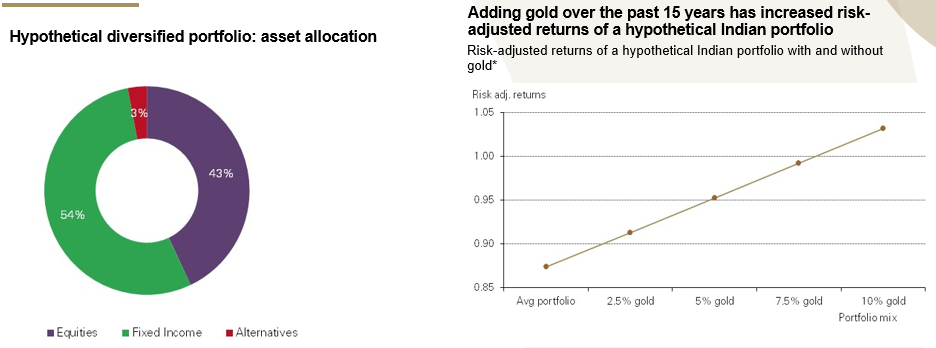Listen to this article
Gold is an emerging market story and has demonstrated strong growth. Attributing this growth to the strength of economies in emerging markets, John Reade, Market Strategist, Europe and Asia, World Gold Council said at Cafemutual Passives Conference 2023 (CPC 23) that gold exposes you to rapidly growing markets.
He also spoke about the relevance of gold as a strategic asset and shared the key reasons why gold should form a part of investors’ portfolios.
Returns
Gold does well not only during times of inflation and crisis but also over the longer term. It is a contributor of returns to portfolios that have been in line with or better than other asset classes.
While there have been periods of relatively poor performance, gold works better if you have it in your portfolio for the long term largely because it tends to protect you against unforeseen events like covid-19, the Russia-Ukraine war and the US banking crisis.

* The annualised returns for various time periods are as on 31 December 2022.
** Based on total return indices including Barclays 1-3 year Indian Treasury, S&P BSE India Government Bond Index, BSE Sensex, CRISIL Corporate Bond Index, Blomberg Commodity Index (INR) and MCX India Gold Spot Index
Source: Bloomberg, Refinitiv Eikon, MCX, World Gold Council
Diversification
Gold is non-correlated to equities and since equities make up most of people's portfolios, diversification through gold is important. The below chart demonstrates this non-correlation.

Liquidity
Gold is more liquid than Indian government bonds and the dollar-rupee exchange rate. Further, the average daily volume is roughly in line with the Indian equity market.

Portfolio Impact
As seen in the below chart, an appropriate amount of gold in a portfolio increases the risk-adjusted return of that portfolio.

Chart 1: The hypothetical average portfolio: 43% allocation to equities (3% MSCI World Net Total Return Index, 40% BSE Sensex Total Return Index), 54% allocation to fixed income (34% S&P BSE India Government Bond Total Return Index, 16% Crisil Corporate Bond Index, 4% Barclays 1–3-year Indian Treasury Index) and 3% allocation to alternative assets (3% Bloomberg Commodity Index).
Source: World Gold Council
Chart 2: The hypothetical average portfolio: 43% allocation to equities (3% MSCI World Net Total Return Index, 40% BSE Sensex Total Return Index), 54% allocation to fixed income (34% S&P BSE India Government Bond Total Return Index, 16% Crisil Corporate Bond Index, 4% Barclays 1–3-year Indian Treasury Index) and 3% allocation to alternative assets (3% Bloomberg Commodity Index.
The allocation to gold comes from proportionally reducing all assets.
Risk-adjusted returns are calculated as the annualised return/annualised volatility.
Source: Bloomberg, ICE Benchmark Administration, World Gold Council*Based on INR performance between 31 December 2007 and 31 December 2022).
Percent allocation
How much gold you allocate to a portfolio depends on what is in the portfolio. A fixed income heavy portfolio could be as low as 2-3% percent allocation and a very heavy equity portfolio could be as high as 15%.
The only portfolios found to not benefit from gold are money market funds as they are designed to return a yield similar to treasury bills.
The above summarises John’s session at CPC 23. You can view the entire session by watching the video below.







